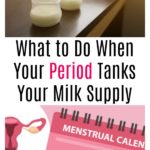Getting your period can be unpleasant anytime, but breastfeeding adds an additional challenge because it can affect your milk supply. Here are some things you can do increase your milk supply during your period.
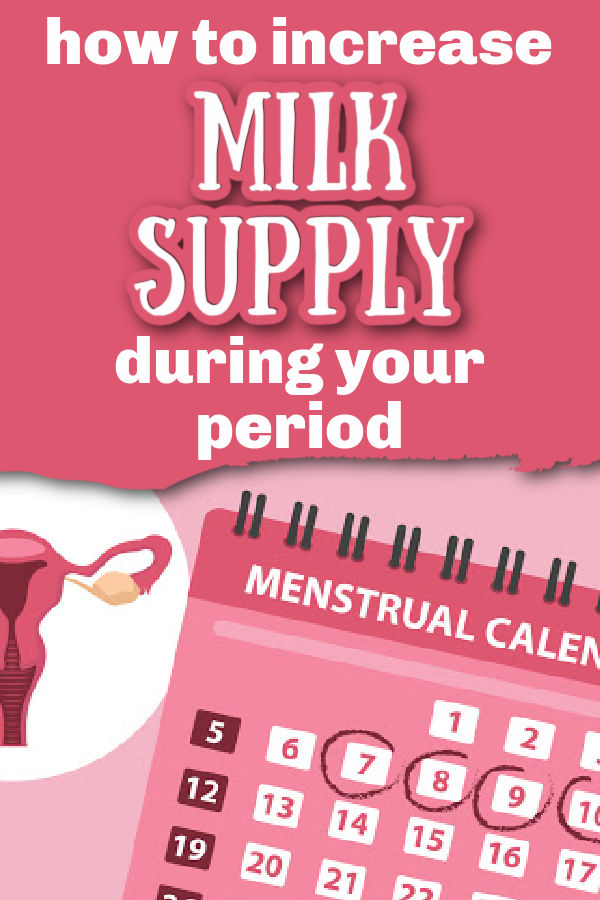
This post may contain affiliate links, which means that if you click through and make a purchase, I’ll be compensated at no additional cost to you. I only recommend products I love! More info here.
How does having your period affect your milk supply?
Some people see no difference in their milk supply when they have their period, while others have a drop that can last a few days to a week or more.
This change is caused by hormonal fluctuations. Usually, when you finish your period, your supply will go back up (but sometimes not all the way back up – it depends on the individual).
How can I increase milk supply during my period?
There are lots of strategies out there for getting your milk supply up long-term (including these) – but what if you just need a short-term boost to get you through your period? Here are some ideas.
1. Take a calcium/magnesium supplement
The drop in milk supply that is associated with your period may be associated with a drop in blood calcium levels which occurs in the middle of your menstrual cycle, around the time that you ovulate.
To combat this drop, you can consider taking a calcium/magnesium supplement.
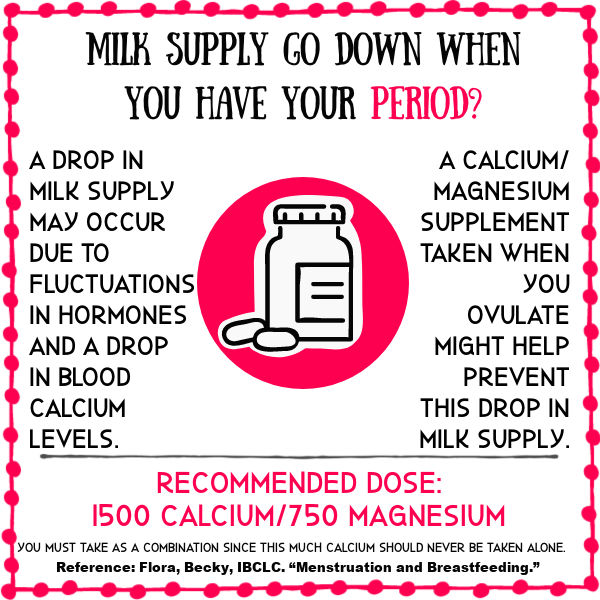
The supplement should be 1500mg calcium/750mg magnesium. Make sure that you buy the combination calcium/magnesium supplement, as that much calcium shouldn’t be taken alone.
In terms of timing, you can either take it every day, or from when you ovulate until the third day of your period. (If you don’t know when you ovulate, it’s generally about two weeks before you’re due for your period.)
2. Eat oatmeal
Many people report an increase in pumping output on the days that they eat oatmeal for breakfast as opposed to the days they don’t. (I don’t normally eat oatmeal because I don’t really like it, but I did an unscientific experiment to see if it would work for me and had good results.)
While there hasn’t been a lot of research on what makes oatmeal increase milk supply or how effective it is, the anecdotal evidence is strong enough that many lactation consultants recommend it.
The good news is that this is an easy change to make to try to compensate for making less milk – just eat oatmeal when you have your period. If you don’t like oatmeal, oatmeal cookies seem to work, too, so you can make cookies and brownies to make it less onerous.
3. Pump for longer and get another letdown
It’s tempting to stop pumping after the milk stops flowing, but try to get a second (or third) letdown.
A letdown occurs when your breasts release milk from your milk ducts, and it looks like this:
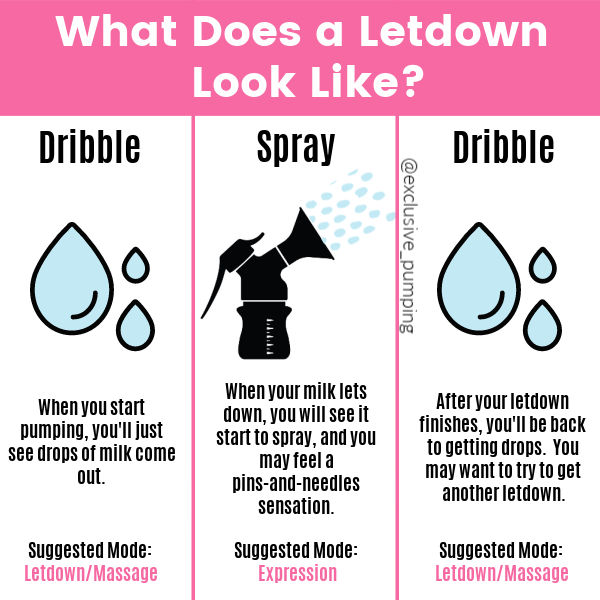
If you take a break for a minute or two and then start the pump over again, you can usually get another small letdown of milk (maybe about 1/4 of what was expressed in the first letdown).
If you find that it’s taking you a long time to get additional letdowns, some things that can help include:
- A warm compress – a washcloth or Booby Tubes.
- Vibration – you can try an electric toothbrush or a lactation massager.
- Relax as much as possible and make sure you are comfortable, as stress can inhibit letdowns.
(*The lactation massager I recommend is available on amazon, or you can also get a 10% discount buying directly from LaVie with the promo code EPUMP.)
4. Do breast compressions
If you’re not already doing hands-on pumping, you can see if this helps you get more milk.
Breast compressions push breast milk out of your milk ducts and can help you remove more milk when you pump. To do them, you basically just move your hands around and squeeze.
Incorporating hand expression in to your pumping sessions might also help. Some people find that hand expressing at the beginning, middle, or end of your sessions works well for them – you kind of have to experiment and see what works for you. More on hand expression here.
5. Try power pumping
Power pumping means pumping on and off for about an hour – 20 minutes on, 10 minutes off, 10 minutes on, and so on. The idea is to mimic a baby cluster feeding – which signals your body to make more milk.
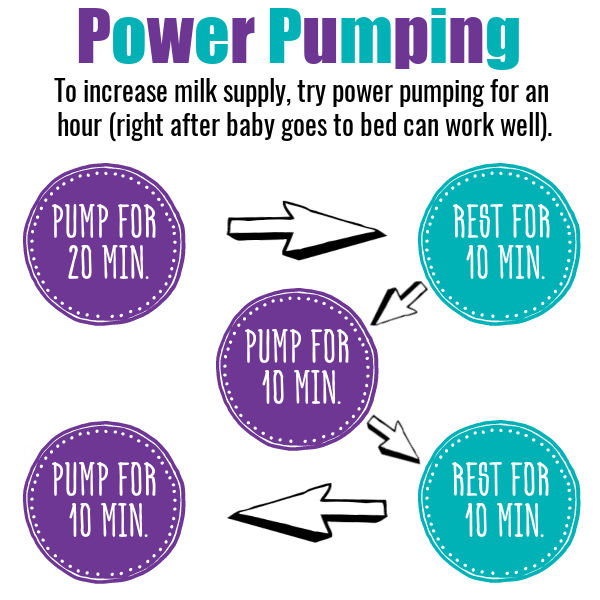
Power pumping usually takes time to work, so you may want to give it at least a few days to see if it helps. More on power pumping here.
6. Drink nursing teas
contain galactagogues (such as fenugreek, blessed thistle, and alfafa) that may increase milk supply in some people. Generally, because the doses are fairly small, you need to drink the tea every day to continue seeing results.
If you track your cycles, I would suggest starting to drink the tea the day or two before you anticipate your monthly dip in supply.
If you don’t like nursing teas, try making lactation lemonade!
Do you have issues where your period reduces your milk supply? Has anything worked for you to bring it up?
References- Flora, Becky, IBCLC. “Menstruation and Breastfeeding.” https://www.motherandchildhealth.com/breastfeeding/menstruation-while-breastfeeding/
- Bonyata, Kelly, IBCLC. “Natural Remedies for Nursing Mothers.” https://kellymom.com/bf/can-i-breastfeed/herbs/natural-treatments/















